Table of Contents
Introduction
What You Need To Know About Visiting Nyerere National Park: Just think of being swallowed up by one of Africa’s most pristine, wildest landscapes, teeming with wildlife along its riverbanks and alive with birdsong in the air.
That’s Nyerere National Park in Tanzania. Be it a first-time safari or one that has been undertaken even by the most seasoned traveler, Nyerere National Park is an experience akin to stepping right into a nature documentary.
This is not a big park; it is among the largest protected areas in Africa, sprawling over nearly 30,000 sq km of diverse habitats and teeming ecosystems.
In this guide, we go deep into all that is required for a visit to this incredible park: from wildlife abundance to unique safari activities, with some travel tips in between-we are sure to well-equip you for a memorable and responsible adventure in one of Tanzania’s top destinations.
About Nyerere National Park
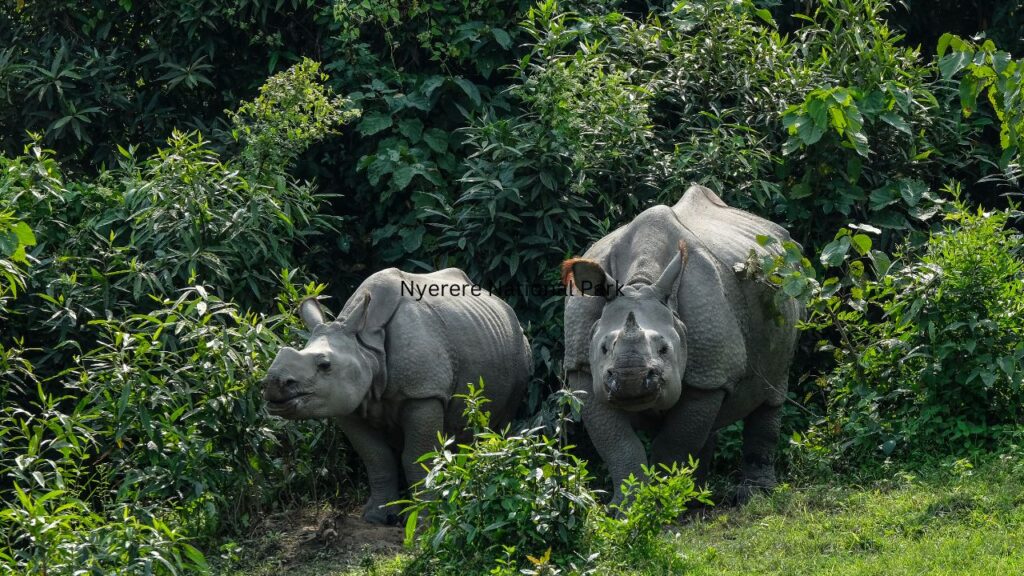
Nyerere National Park is in southeastern Tanzania, thus providing an easy yet secluded destination from most cities like Dar es Salaam and Zanzibar.
This shall be a place that promises both adventure and solitude, with landscapes stretching as far as the eye can see. It is for those who crave escaping into nature that Nyerere offers every taste of Africa in its rawest form.
Size and Geography
This is a huge park, measuring about 30,000 square kilometers, hence the largest national park in Tanzania and one of the biggest in Africa. You will find an amazing mix of various ecosystems within the vast borders From riverine forests to savannahs, to woodlands, this is just amazingly diverse and really sets the stage for some pretty unforgettable wildlife encounters.
Historical Background
At one time, Nyerere National Park was the Selous Game Reserve, which was founded at the beginning of the 20th century and named after the celebrated hunter and conservationist Frederick Selous. A legacy today, it stands as a monument to his memory and commitment by Tanzania to conservation of its natural resource base.
UNESCO World Heritage Site Status
Besides being big and beautiful, it is also a UNESCO World Heritage Site for exceptional biodiversity and conservation attitudes. This gives more reason to the park, holder of rare, fragile ecosystems of huge relevance to regional environmental health.
Wildlife to Encounter Big Game and Predators
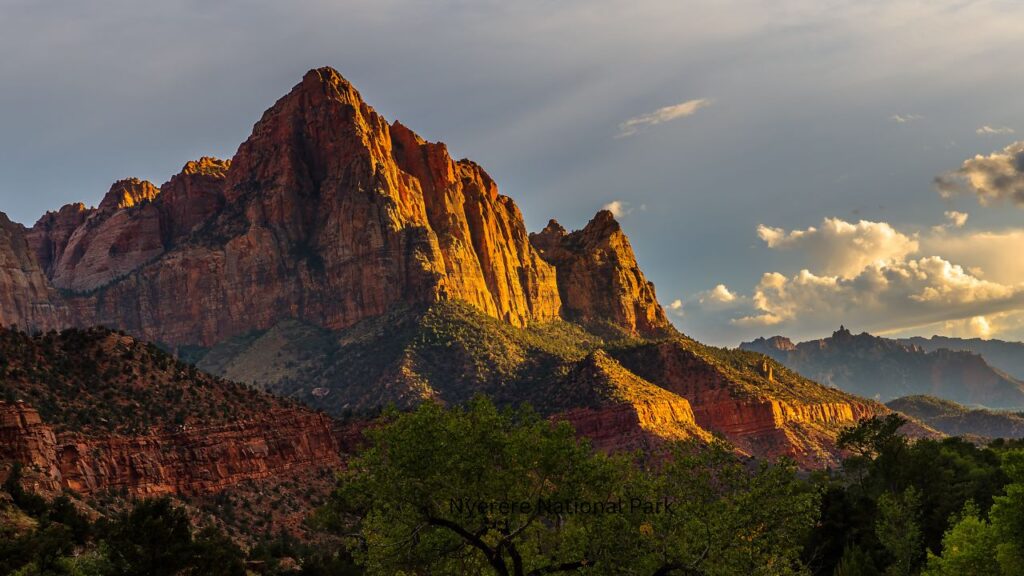
Not a disappointment for those in search of spotting the iconic “Big Five” of Africa, Nyerere National Park will not let them down.
The lions are free to roam around, usually found very lazy and resting under a tree or sometimes strolling across the many plains in search of prey.
Elephants are another common sight, with their usual gentle, powerful presence. Leopards and buffaloes are a common enough sight, with black rhinos, though less frequently seen, completing the list.
This is backed on the park’s rough and dry environment, which makes it an ideal place for them to hunt. For those interested in rarer species, the park contains the endangered African wild dog-a thrilling sight for any wildlife enthusiast.
Species of Birds
Birdwatchers, brace yourselves. Nyerere is home to over 440 species, from iridescent kingfishers to the iconic African fish eagle. The variety is simply incredible, and chances are that you might spy anything from tiny bee-eaters to colorful storks and massive marabou. For both the seasoned birder and the merely curious, the birdlife here adds a colorful, musical layer to your safari experience.
Aquatic and Reptile Life
It is the Rufiji River, working its way right through the heart of the park, that keeps untold numbers of the others alive. It’s also home to a healthy population of both Nile crocodiles and hippos.
Everything from watching a crocodile bask on the riverbanks to observing a pod of hippos snorting in the water-all those classic safari moments you’ve dreamed about-are here in abundance.
Insect Life and Flora
Equally colorful, too, is the insect life-from butterflies to dragonflies. These minute creatures of life play a giant role within the ecosystem: they pollinate plants and act as food for birds and reptiles. And then there’s the flora, too, ranging from tall, towering trees down to the smallest wild flowers adding color and texture to the landscape.
Read MoreBest Things to Do in Nyerere National Park
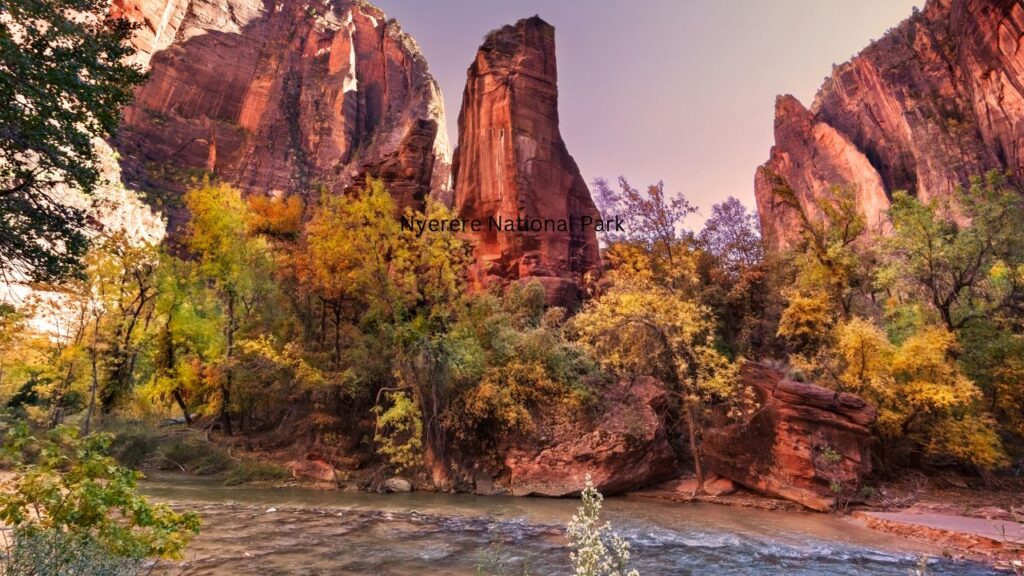
Ruvuji River
The Rufiji River is the lifeblood of Nyerere National Park. The largest river in Tanzania, it winds right through the park and provides a fertile floodplain-the scene for some pretty spectacular game viewing.
Boat safaris across the Rufiji are one of those things that should feature on your bucket list, as you’ll get a whole new perspective in drifting past hippos, crocodiles, and birds fishing in the shallows. It really is the heart of the park and an unforgettable highlight for any visitor.
Lake Tagalala
Another beauty of the park is Lake Tagalala. It is a very quiet lake and full of life, which you can do uniquely because it offers boat safaris that bring closer by a number of animals.
Often, you will find large flocks of birds on the lake, along with hippos and crocodiles basking in the sun. The stillness of the lake with the wildlife it brings makes this a pure African scene.
Stiegler’s Gorge
The Stiegler’s Gorge is a phenomenal canyon as deep as 100 meters. It is magnificently cut by the Rufiji River and has dramatic cliffs and roaring rapids. This gorge alone would be a reason worth visiting, promises panoramic photos, and is a memory of the raw power in nature.
Hot Springs Not far from the shores of Lake Tagalala, there are natural hot springs-a surprise and one of the wonders of Nyerere.
These hot springs are a good place to relax after a day of expedition, and the warm water rich in minerals is said to be therapeutic.
Historical Sites and Artifacts The park contains ancient rock paintings and other cultural remains that permit the history enthusiast glimpses into its rich past.
These sites give depth to the experience, showing that Nyerere is indeed a place of historical and cultural importance beyond being a natural wonder.
Safari Activities in Nyerere National Park
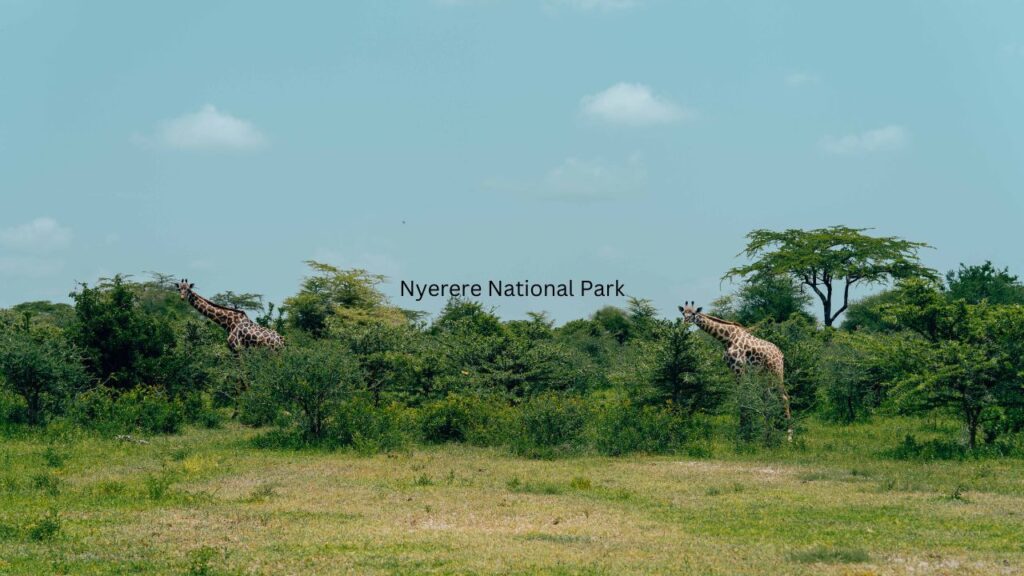
Game Drives
One of the best ways to see Nyerere is by vehicle. Game drives allow a person to cover big expanses within the park and allow everything to be seen, from lions to elephants.
Guides knowledgeable about the park’s wildlife will make sure that nothing is missed with their years of experience.
Many game drives are offered at different times of day, each with its own set of advantages. Drives at dawn are optimal for predator sightings, while drives taken later in the afternoon will reward one with that special sunset glow.
Boat Safaris
A boat safari on the Rufiji River is one of the signature experiences at Nyerere. Contrary to a classic game drive, this kind of safari allows you to see animals from a water perspective.
You will stay pretty close to hippos and crocodiles, including great sights of birds. It is calm and peaceful, offering a different perspective on the park’s wildlife.
Safari on Foot
Take a guided walking safari for a completely different feeling. Accompanied by professional guides, such walks will bring you much closer to the little details of the park, like animal tracks, plants, and insects.
Walking safaris give you a completely new view of the landscape, moving at a slower pace, which lets you truly be connected with the surroundings.
Birdwatching Safaris
Specialised safaris for bird-watching can also be done because of the great bird diversity in the park. It is a tour dedicated to the search and identification of bird species, from brightly colored kingfishers to storks with their gracious appearance.
Guides will assist in observing rare and unique species, making your tour unique and memorable for avid birders and casual observers alike.
Photography Tours
Photography safaris are specifically great for those who want to make sure they capture the beauty of the park.
From guides that will understand lighting, angles, and where the greatest shots will be taken, to tours designed to get you those perfect shots of wildlife and landscapes, this tour will certainly make sure you take great memories home, if you’re a professional or enthusiastic photographer.
Fishing Tours
If that is more to your liking, river fishing trips are possible with Nyerere along the Rufiji River. It can be both a challenge or reward to get fish in its waters, plus it’s also a great way to experience another slice of life in such an ecosystem.
Best Time to Visit Nyerere National Park
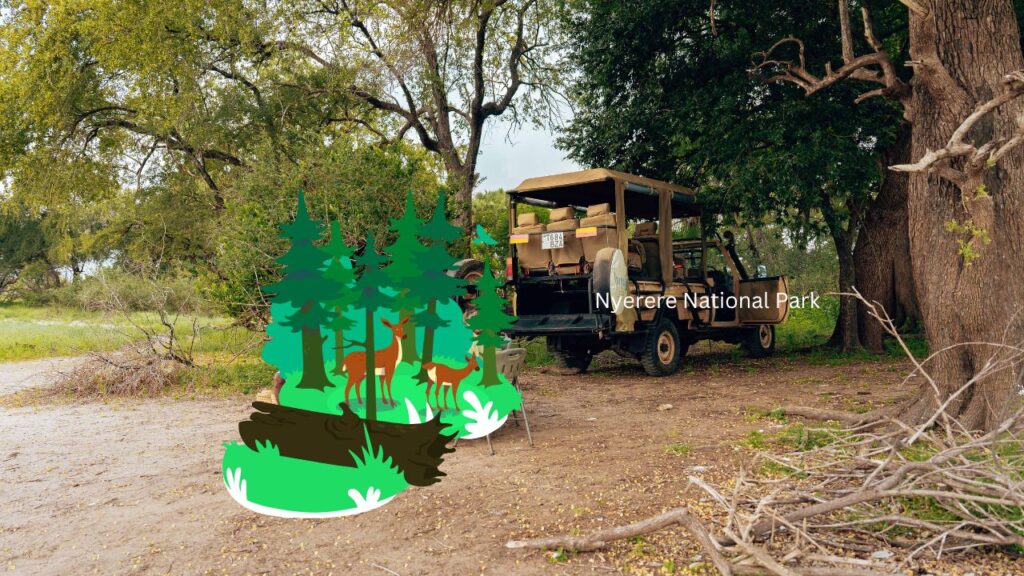
Peak Dry Season: June to October
Currently, the dry season is believed to be the best time to visit Nyerere National Park since one can view wild animals more frequently.
This is the time of year the animals will try to gather around the water points, thus trying to make them as easy to find as possible.
Vegetation is less dense, therefore better viewing of scenery and subjects, and hence the conditions are very suitable both for game drives and by boat safaris. Dry season-the classic safari experience-hot daytime, chilly night, and continuous wildlife sights.
Wet Season (November to May)
Heavy rains turn the park into something of a green paradise, with blooming flowers and plenty of birdlife. Wet season coincided with the calving season for most of the animals, and you could spot animals together with their young ones.
It is, of course, very interesting for all the birdwatchers, as migratory birds start to arrive in big numbers. It goes without saying that some areas are more difficult to access, but the scenery and wildlife activity pay off.
Month-by-Month Breakdown
June to October: Best time for viewing game and it rarely rains. Conditions are dry, therefore best game view.
Wet season: November-March, the landscapes are green, and the bird activity is very prominent.
April and May: During this period, there is heavy rainfall that makes some areas unreachable, but with a great scenery and less traffic in tourists, it becomes ideal for those who want a visit that is not too noisy.
Special Considerations
Of course, every season offers its own highlights, from baby animals in spring to bird migrations in fall. If you have specific interests-photography or birdwatching, for example-plan your trip around these events of the season to make it more customized to your needs.
How to Get to Nyerere National Park
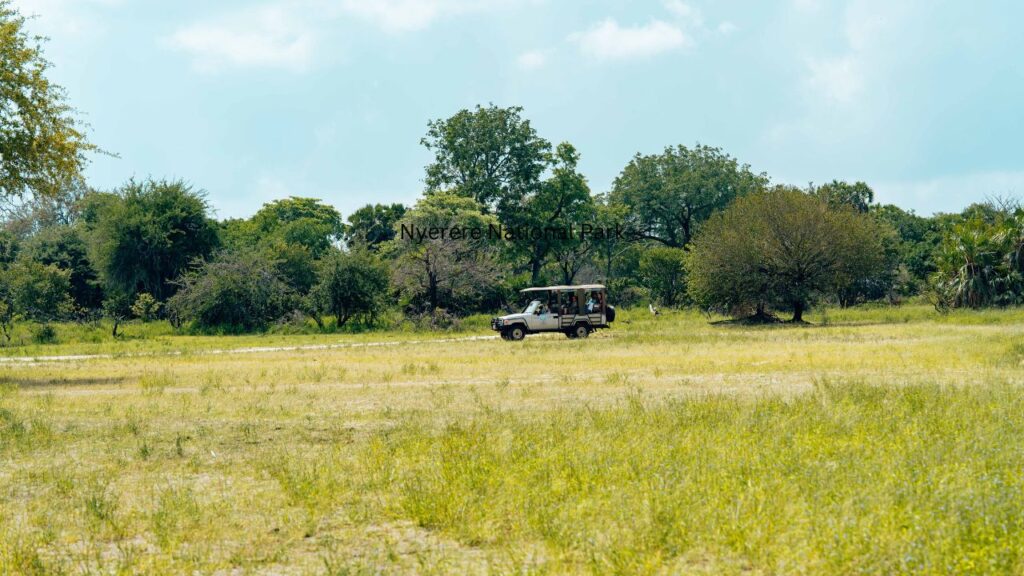
Domestic Flights
The most convenient ways to reach Nyerere are flights that can be boarded from Dar es Salaam, Arusha, or Zanzibar. Domestic flight schedules are quite handy, and small planes fly right to airstrips inside the park. These save time and allow one a great view of the Tanzanian landscape from the skies.
Overland Travel
The more adventurous take overland travel from Dar es Salaam. It takes several hours of travelling overland along routes passing through rural Tanzania. It is somewhat longer than flying but a good way to see the countryside and can be a rewarding experience in its own right.
Safari Guided Tours
Many visitors do take the guided tours, some even offer transportation, accommodation, and activities in the park. Guided tours take the headache off logistics, enabling you to relax and enjoy your safari without details getting in the way.
Accommodation Options
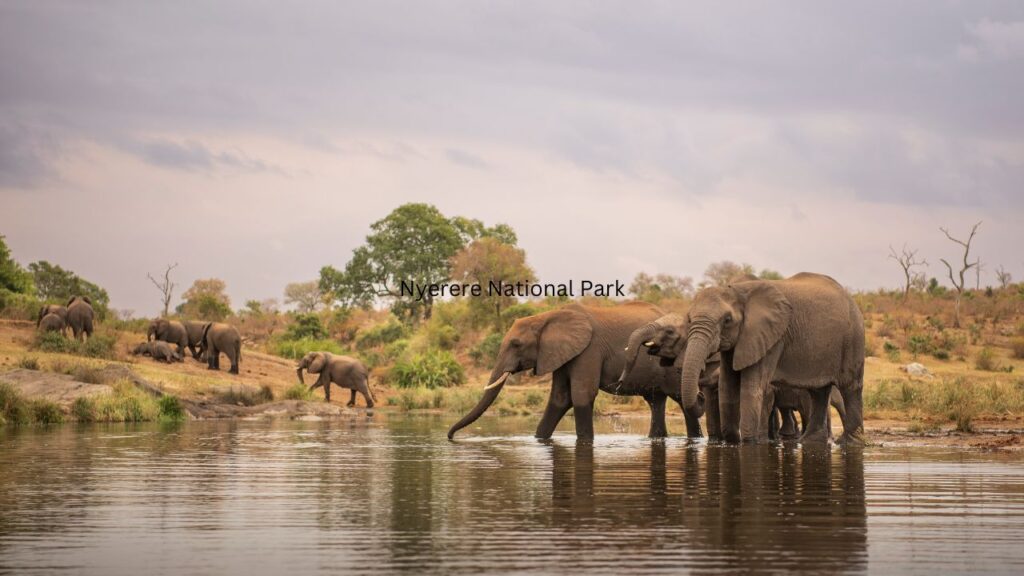
Luxury Lodges and Tented Camps
Nyerere hosts some of the best safari lodges in Tanzania. One can try all the great luxury lodges that abound in plush amenities, great views, and high-class services, such as Selous Serena Camp and Sand Rivers Selous. The stay in any of them offers comfort and an immersive experience, replete with all facilities one would expect from a high-end safari.
Eco-Friendly Camps
For sustainable travelers, there are eco-camps that are great choices. These camps utilize solar power, composting toilets, and other forms of sustainability. Eco-lodges at Beho Beho also at Lake Manze Camp come with comfort and a high commitment to conservation.
Affordable Options
There are economy options, too: low-key tented camps and campsites around the entrance to the park that keep the essence of an authentic stay intact, sans over-expensive price tags. These camps are ideal for such travelers who wish to be within the boundaries of the park but not break their banks.
All-Inclusive Packages
Lots of outings offer packages that are all-inclusive for meals, game drives, and whatever other activities they have on-site. Sometimes this can work out to be the cheapest way to see the park because it makes planning easier and maximizes your time usage.
Essential Tips for Visiting Nyerere National Park
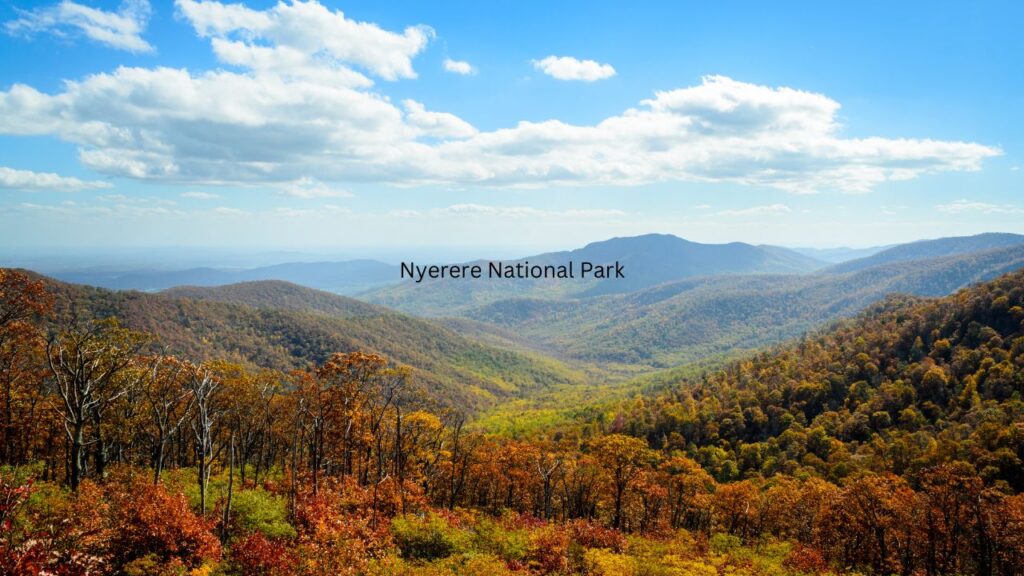
Precautions on Health and Safety
As Nyerere is really a far-off place, precautions about health and safety are vital. Yellow fever and typhoid vaccinations beforehand are prerequisite and immensely important. Insect repellents and anti-malarial medication may also be advisable as the area represents one of the malaria hotspots.
Essentials to Pack
Pack lightly with clothing appropriate for warm days and cool nights. Don’t forget to include sturdy shoes, a wide-brimmed hat, binoculars, and a camera with a zoom lens for wildlife photography. Bring sunscreen, refillable water bottles, and other environmentally friendly items in order to minimize litter.
Respect for wildlife and park rules
The care for park rules means care about your safety and the condition of animals. Keep a safe distance from wildlife, do not litter, and respect trails or areas that may be closed.
Understanding the Local Mores
Tanzania is a very friendly and warm culture. Dress modestly; ask locals for permission before taking their picture; and learn a few words of Swahili to be respectful.
Travel Insurance
Comprehensive travel cover is essential in such isolated destinations as Nyerere. Look at medical emergency cover, delays, and cancellations so you will have peace of mind while being out within the wild.
Costs and Budgeting Tips
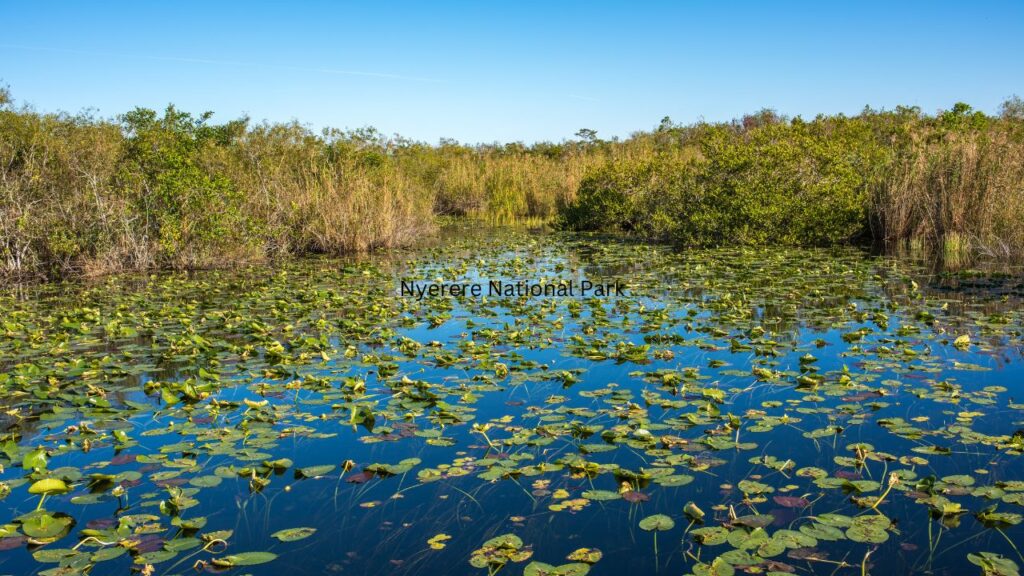
Fees and Licences
Entry fees into these parks, together with permits, can become quite costly. Allow for this in your budget, as most, if not all, park fees are given on a daily basis and there could be additional fees for things like boat safaris or walking tours.
Accommodation Costs
Accommodation costs vary greatly, from low-budget camps to luxurious lodges. The higher the option class, the higher the rate; the cheaper alternatives offer more basic facilities for lower rates.
Other Expenses
Budget additional for costlier activities, meals, and tips for guides. Most accommodations include meals, but it’s good to have extra money for snacks or souvenirs.
Money-Saving Tips
Save by traveling out of peak season, booking well in advance to receive a discount, or joining a group tour where the expenses are divided among participants.
Conclusion
It is a destination like none other: an amalgamation of adventure, natural beauty, and serenity hardly anywhere else in the world.
It has diversified wildlife, beautiful landscapes, and various activities, making it a haven for safari-goers, birdwatchers, and nature lovers alike.
You’re either exploring the Rufiji River, marveled by Stiegler’s Gorge, or watching some very rare birds-the moments in Nyerere start off and feel exactly like scenes in some nature documentary.
Ready to plan your adventure? Begin booking your trip to Nyerere National Park and feast your senses in one of Tanzania’s most remarkable wilds.
It is not just a journey; it’s an experience that lingers well past when you are gone and a memory of Africa’s wild heart.



